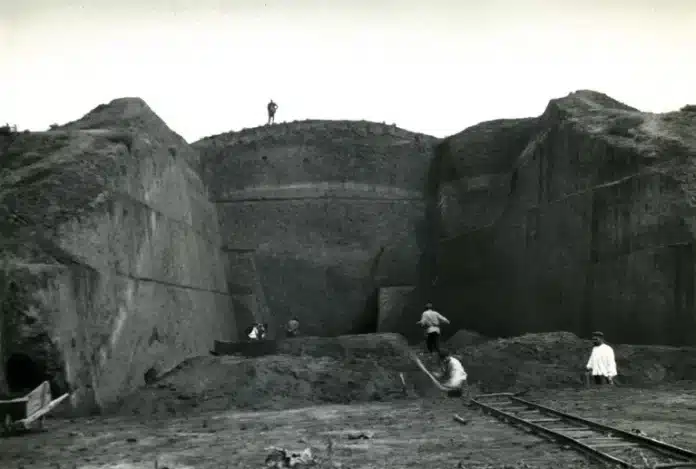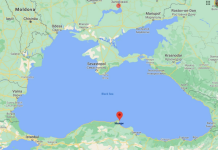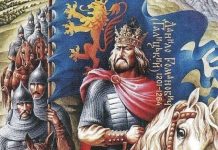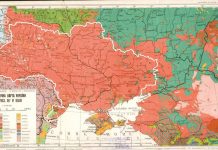The Solokha barrow, on the left bank of the Dnieper River, not far from the city of Nikopol in central Ukraine, was excavated in the years 1912-13. The barrow had an embankment eighteen meters high (58.5 ft.) and concealed two vaults. The first vault, in which a woman of high birth was buried, had been plundered a long time ago and all that was left were the remains of two horses in rich attire, old dress ornaments, a gold needle, and two vessels – one silver, the other bronze. The second vault contained the body of a chief, his weapon-bearer, a servant, five horses, and a stableman. The vault was not looted and yielded extraordinary riches. The head of the dead chief was covered with a heavy bronze helmet; gold rings and bracelets adorned his arms, and around his neck was a gold, crescent-shaped ornament (gryvna). The splendor of the attire, embroidered with gold plaques, was further heightened by an iron sword in a gold sheath and a delicately wrought gold phiale symbol of power. Hundreds of bronze arrowheads, seven silver vessels, a ladle and sieve for wine, and three enormous pots with remnants of food – those were only the most significant of objects found in the grave. But still, the most famous (worldwide already) artifact from that vault, the only relic of antique jewelry of its kind was the gold comb that lay beside the head of the chief lay a comb. Solokha Comb article >
© Newspaper Theme by tagDiv










